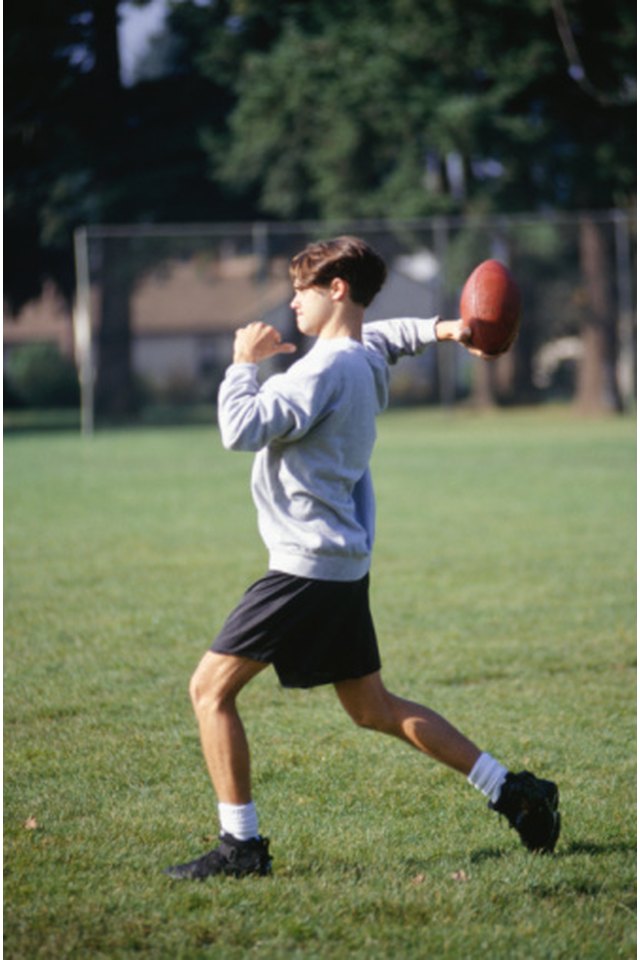Touch Football Defensive Strategies

Touch football is a recreational game often featured at company picnics and family get-togethers. It also can be a competitive game played at the youth, high school and college levels. When players compete in touch football, defensive strategies can help them keep their opponents from making big plays and help their team win the game.
Man-to-Man Coverage
One of the least complicated ways to play defense in touch football is for each defensive player to cover one offensive player. A pass rusher will try to reach the quarterback. Each defensive player will follow his assigned player all over the field. One pass rusher will try to get his hands on the quarterback. In most touch football games, he must wait three to five seconds before beginning his pass rush. In many cases, the defensive lineman will count "One Mississippi, two Mississippi..." and so on to count off the time.
Zone Coverage
Touch football often can become a scoring fest, with teams exchanging long scoring plays throughout the game. If there are mismatches in coverage -- one receiver might be bigger, stronger and faster than his opponent in coverage -- a team might want to use zone coverage. With this technique, one or two defensive players are responsible for stopping the deep passes, while one or two others are charged with stopping the short pass. The best athletes try to stop the deep pass by intercepting the ball or knocking it down.
Weakside Coverage
Touch football often features an athletic quarterback who throws the ball on the run to avoid pressure. If he is a right-handed quarterback, he will normally throw the ball while running to his right. If he is left-handed, it's just the opposite. A majority of the plays will be to the quarterback's dominant side. However, the quarterback might throw or run to the opposite side just to keep the defense "honest." This means the defense must keep at least one player on the weak side to prevent the offense from taking advantage of this hole in the coverage.
Disguised Coverage
A disguised coverage is one in which players normally assigned to certain players switch off to a new coverage responsibility at the snap of the ball. Because an offense will learn after a short time who is assigned to whom, changing things up helps the defense avoid predictable coverage patterns and make more big plays. The defense can switch to this type of coverage at any point in the game and switch back whenever it wants.
References
Writer Bio
Steve Silverman is an award-winning writer, covering sports since 1980. Silverman authored The Minnesota Vikings: The Good, The Bad and The Ugly and Who's Better, Who's Best in Football -- The Top 60 Players of All-Time, among others, and placed in the Pro Football Writers of America awards three times. Silverman holds a Master of Science in journalism from the Medill School of Journalism.
